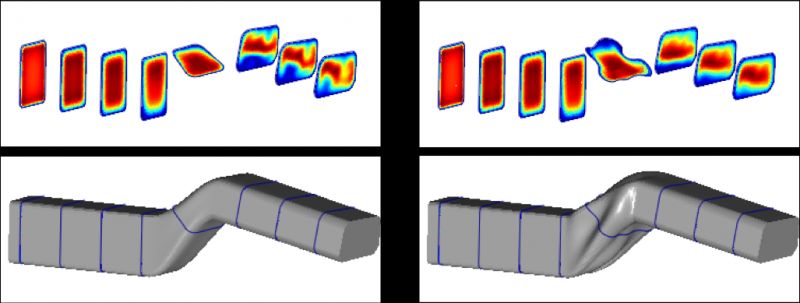Dr Jens-Dominik Mueller
Dipl-Ing, MSc, PhD
Research Overview
Numerical Methods, Computational Fluid Dynamics, Adjoint methods, Multidisciplinary Design Optimisation, Modelling and simulation, Aerodynamics, Energy Systems, High-Performance Computing
Interests
Jens' research focuses on development and application of effective sensitivity methods in numerical modelling, where a simulation provides not just the value of an objective function such as e.g. lift or drag of a wing, but also how much that objective will change if any input parameter, such as any of a large number of design variables, or an variable parameter e.g. due to manufacturing uncertainty.
The efficient computation of a large number of these sensitivities is done using adjoint solvers which his group develops using automatic differentiation software tools. The work has been funded among others by EU grants such as FlowHead , About Flow, IODA and also through direct industrial funding. These adjoint solvers allow to calculate sensitivities of a cost function with respect to an arbitrarily large number of design variables at near constant computational cost. It is this property that allows to develop novel and effective design optimisation methods that can be integrated into the industrial design chain while giving complete flexibility of what to optimise for and allowing the use of automatic parameterisation methods which typically result in very large numbers of design variables.
The group has developed a number of design parametrisation methods, in particular a unique CAD-based method which allows to maintain the CAD description of the shape inside the automated design loop. The approach avoids the need to develop a separate parametrisation to describe the degrees of freedom of the design, but that can import the boundary representation from CAD and produce the optimal shape in CAD format. The figures below show the Volkswagen S-Bend case optimised with CAD-based shape parametrisation. The pressure drop in the bend improves by 25% as demonstrated by the clean streamlines in the optimised case (right). The CAD-based parametrisation allows significant distortion of the shape but maintains smoothness.


Current efforts of the group in the About Flow project are to
- develop adjoint sensitivity methods for unsteady flows, which are typical for industrial applications: in practice the current steady-state methods do hit a bottleneck as all industrial flows of interest have at least some area of mild instability and non-stationarity.
- goal-based error-estimation and mesh adaptation methods for steady and unsteady flows and coupling to "one-shot" iterative methods to achieve high efficiency.
- combination of source-transformation and operator-overloading AD methods using hand-derived fixed-point time-stepping loops to obtain optimal efficiency in memory and run-time of discrete adjoint codes. The group has demonstrated this for compressible flows, current efforts are to develop incompressible fixed-point adjoint methods using AD and apply this to OpenFOAM.
- discrete adjoint solvers for optimiation of closely-coupled multi-physics systems.
- use of adjoint methods to derive data-driven closures for turbulence modelling with highly unsteady approaches such as LES.
Other application of the sensitivity work is in biofluids where the group has studied the sensitivity of the flow pattern in cerebral aneurysms with respect to uncertain quantities such as outflow speeds, or surface smoothing parameters. Current work is on producing a sensitivity index that can be linked to the likelihood of aneurysmal rupture.

